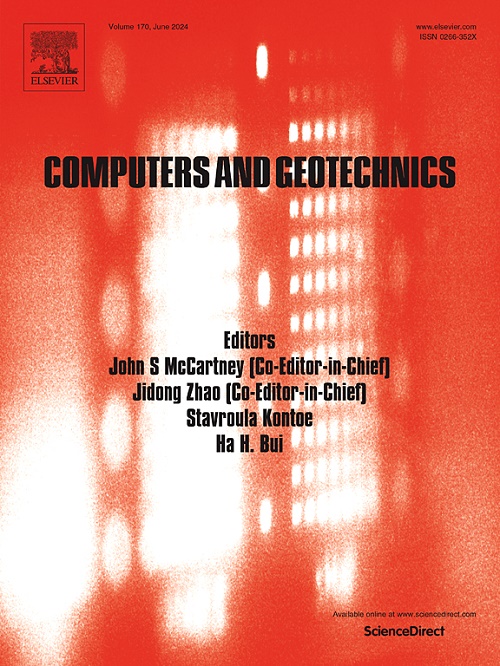Numerical investigation of submerged landslide impact on underwater blocks using a two-phase SPH model: Insights into re-acceleration and extra translational extension of slides
IF 5.3
1区 工程技术
Q1 COMPUTER SCIENCE, INTERDISCIPLINARY APPLICATIONS
引用次数: 0
Abstract
Submarine landslides, as prevalent geological hazards, carry substantial sediment loads and high-energy water flows, posing threats to seabed infrastructure. However, research on dynamics of submarine landslide impacts on seabed structures remains limited. This paper applies a two-phase Smoothed Particle Hydrodynamics (SPH) model to simulate the impact dynamics of submarine landslides on rigid blocks. The model fully accounts for both water- sediment and sediment-sediment interactions, incorporating a two-phase δ-SPH approach to simulate impulse pressure stably and accurately. Results reveal that the presence of block does not always hinder sliding. Submarine landslides may experience notable re-acceleration and extra translational extension after colliding with underwater blocks if the block height is less than a critical threshold (about 26 % in the present simulations) of the slide’s frontal thickness. The phenomenon is highly related to the mixing between the slide and the ambient seawater, which has not been previously explored but is quantitatively discussed in this study. Furthermore, neglecting this mixing could result in an underestimation of the affected region length by more than 10%, a reduction in peak translational velocity by 8 %, and a weakening of impact forces on structures by up to 16 %.
求助全文
约1分钟内获得全文
求助全文
来源期刊

Computers and Geotechnics
地学-地球科学综合
CiteScore
9.10
自引率
15.10%
发文量
438
审稿时长
45 days
期刊介绍:
The use of computers is firmly established in geotechnical engineering and continues to grow rapidly in both engineering practice and academe. The development of advanced numerical techniques and constitutive modeling, in conjunction with rapid developments in computer hardware, enables problems to be tackled that were unthinkable even a few years ago. Computers and Geotechnics provides an up-to-date reference for engineers and researchers engaged in computer aided analysis and research in geotechnical engineering. The journal is intended for an expeditious dissemination of advanced computer applications across a broad range of geotechnical topics. Contributions on advances in numerical algorithms, computer implementation of new constitutive models and probabilistic methods are especially encouraged.
 求助内容:
求助内容: 应助结果提醒方式:
应助结果提醒方式:


